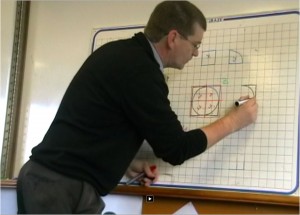The box is left blank!
Students have little or no understanding of the differences between relationships and expressions. Students think that problems in mathematics are about finding specific solutions.
Often students have some idea of what a relationship is and some students can even express the rule iteratively, but it is another problem for them to express these rules formally. For example the following pattern can be expressed as “going up in threes” even by my students with limited prerequisite knowledge.
X 1 2 3 4 5
Y 5 8 11 14 17
While my most able students can write the rule as y=3x+2, some students have given me other expressions. A student who writes y=3x+5, might mean y=3(x-1)+5 and another students who writes y=x+(2x+1) might mean y=x+2(x+1). I have learned that incorrect answer does not necessarily mean a student lacks understanding of the relationship.
How do we know relationships are challenging for our students to learn?
We assess our students with a Relationships Diagnostic Test.
So what have we done to help our students understand relationships?
We have changed the way we approach our teaching by:
- Showing students how algebra is everywhere in our lives
- Establishing what each student understands through assessment
- Promoting algebraic thinking with rich and meaningful contexts
- Demonstrating the benefits of rigour and correct use of vocabulary
- Building a “toolbox” of knowledge and skills that students can use appropriately and efficiently


